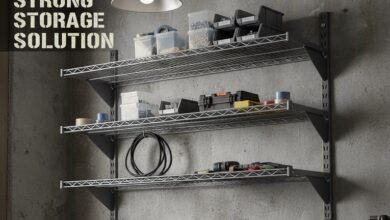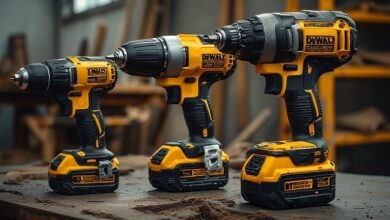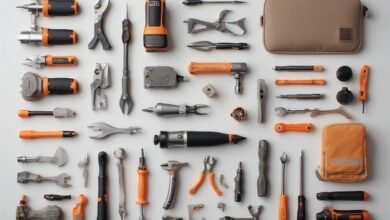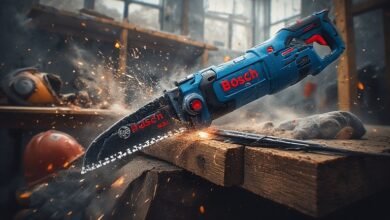Smart & Connected Tools: Precision Meets Innovation
The world of tools is evolving rapidly in 2025. No longer limited to manual operation, today’s smart and connected tools integrate digital technology, wireless connectivity, and precision measuring capabilities. From smart drills and laser distance measurers to IoT-enabled levels and angle finders, these innovations are transforming how professionals and DIY enthusiasts approach projects. But how do they compare to traditional tools, and why are they among the top trending products this year? Let’s explore.
The Rise of Smart Tools 🌟🔧
Smart tools combine classic hardware functionality with digital intelligence. Imagine a drill that tracks torque, a saw that logs usage, or a level that sends real-time data to your smartphone.
- Trend Appeal: Efficiency, accuracy, and data-driven results are driving the adoption of connected tools.
- Popular Products: Bluetooth-enabled measuring tapes, smart torque wrenches, laser distance meters, and app-integrated power tools.
- Benefits: Reduce human error, speed up workflow, provide real-time analytics, and simplify complex tasks.
Why They’re Trending
Professionals and hobbyists alike value precision, speed, and integration with digital workflows. With smart homes and connected projects becoming mainstream, tools that communicate with devices are increasingly desirable.
Precision Measuring Devices: Accuracy in Every Detail 📏⚡
Precision measuring devices take reliability to the next level. These tools are engineered for accuracy, often enhanced with digital readouts and wireless data transmission.
- Examples: Digital calipers, laser distance meters, angle finders, moisture sensors, and multi-functional measuring gauges.
- Trend Appeal: In construction, woodworking, engineering, and DIY, precision matters more than ever.
- Benefits: Reduce mistakes, improve alignment and fit, and allow data tracking for quality control.
Why They’re Trending 🌟
In 2025, precision is synonymous with professionalism and efficiency. These devices are increasingly paired with apps for real-time logging, analytics, and project planning, making them more than simple measurement tools—they’re digital assistants for accuracy.
Smart Tools vs. Traditional Tools: A Comparative Look ⚖️
- Traditional Tools: Time-tested, reliable, often cheaper, and require manual skill.
- Smart / Connected Tools: Offer automation, real-time feedback, and digital integration, but at a higher upfront cost.
Key Differences
- Efficiency: Smart tools reduce repetitive tasks and errors.
- Data Access: Connected tools allow tracking of project metrics, usage, and maintenance schedules.
- Learning Curve: Traditional tools are intuitive, whereas smart tools may require app setup or calibration.
👉 The choice depends on whether precision, analytics, and integration are more important than simplicity and cost.
Design & Functionality Innovations 🎨⚡
Modern smart tools are ergonomically designed, lightweight, and often modular. Many connect via Bluetooth or Wi-Fi to smartphones, tablets, or cloud-based software. Features like auto-calibration, LED guidance, and voice prompts make them accessible for both professionals and hobbyists.
- User Experience: Smart displays and app interfaces provide step-by-step guidance, tutorials, and usage logs.
- Aesthetic Trends: Sleek designs with minimalist interfaces and bright LED indicators are becoming standard.
👉 Design isn’t just about looks—it enhances usability, safety, and precision.
Market Trends Driving Adoption 📈
- Remote Work & DIY Boom: More people are investing in home projects requiring precise tools.
- Data-Driven Construction: Professionals use connected tools for project analytics, reporting, and workflow optimization.
- Integration with Smart Homes: Tools that sync with apps and cloud systems fit into a connected ecosystem.
- Sustainability & Maintenance: Smart tools can alert users for maintenance, improving longevity and reducing waste.
Strengths & Limitations ⚖️
- Smart / Connected Tools:
✅ Strengths: Precision, efficiency, data logging, remote monitoring.
❌ Limitations: Higher upfront cost, dependency on battery or connectivity, slight learning curve. - Traditional Tools:
✅ Strengths: Affordable, intuitive, reliable, robust.
❌ Limitations: Prone to human error, lack of data tracking, limited workflow integration.
👉 Both types have their place: smart tools enhance productivity, while traditional tools remain indispensable for basic tasks and simplicity.
Final Verdict 🏆
In 2025, smart and connected tools represent the future of construction, engineering, and DIY. They provide:
- Efficiency: Reduced errors and faster project completion.
- Precision: Accurate measurements and alignment for professional results.
- Integration: Seamless connection with apps and digital workflows.
While traditional tools continue to offer reliability and affordability, connected tools are redefining productivity, precision, and project management. For those serious about accuracy and efficiency, these smart devices are no longer optional—they’re essential. 🛠️📲✨



